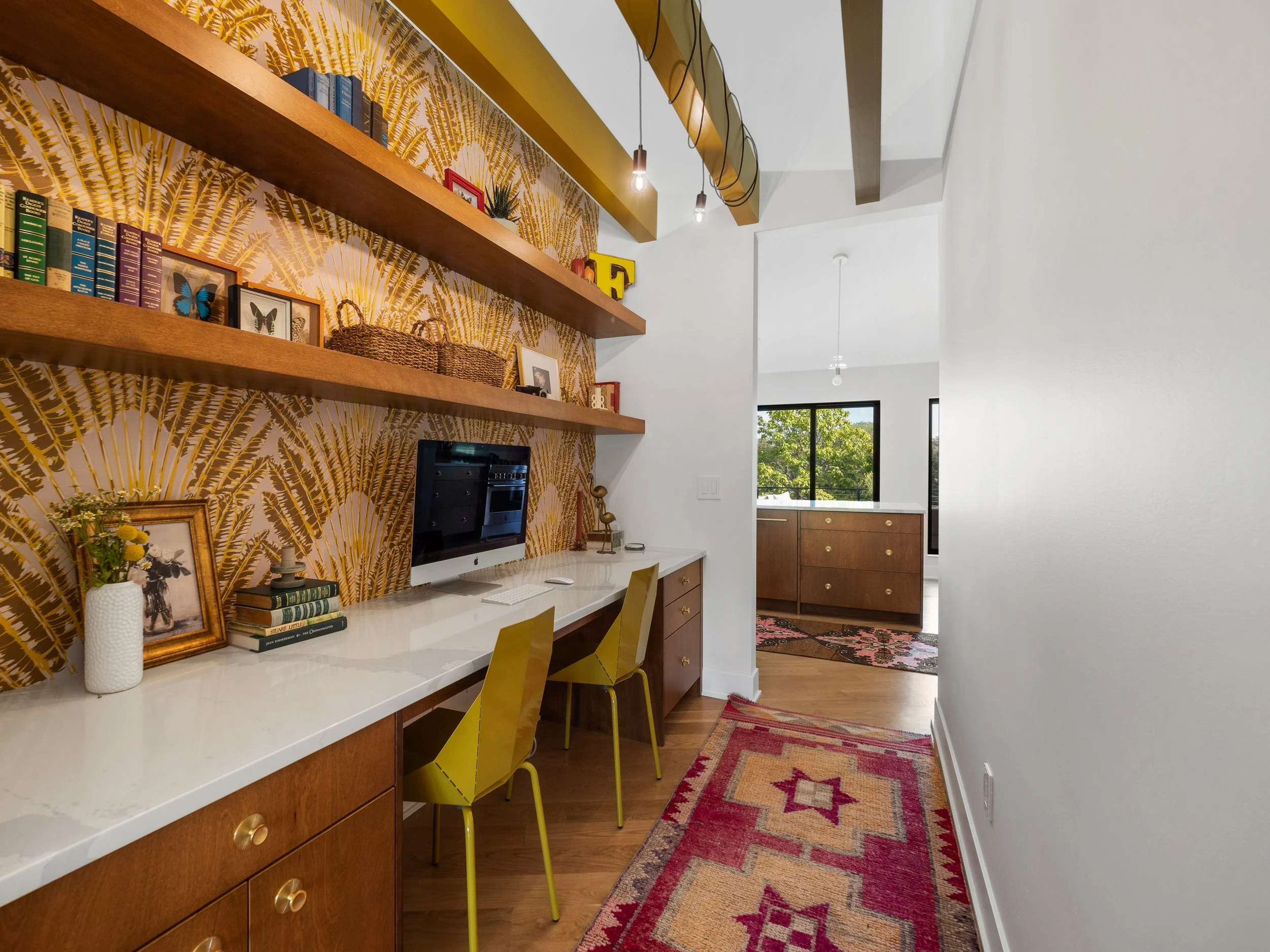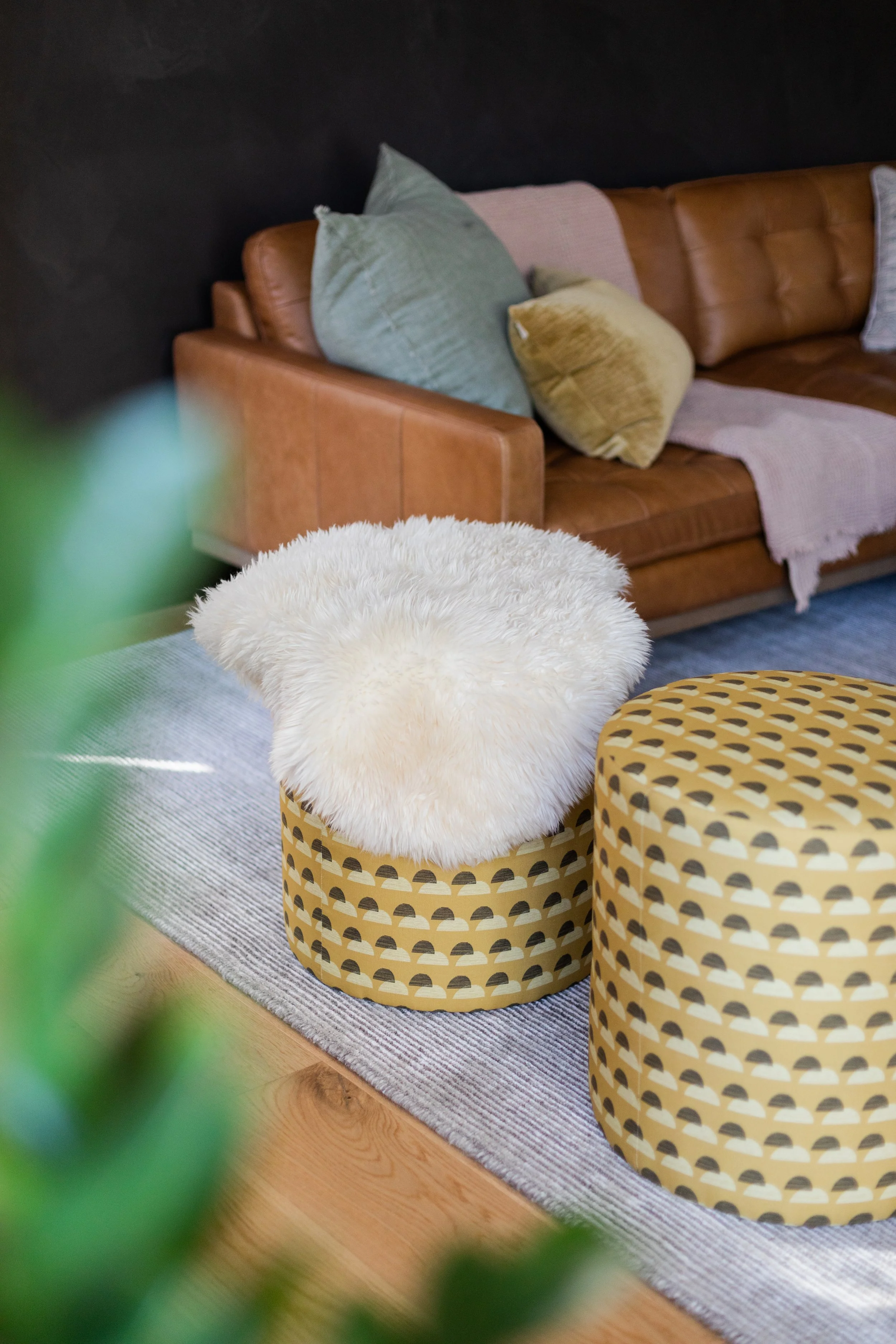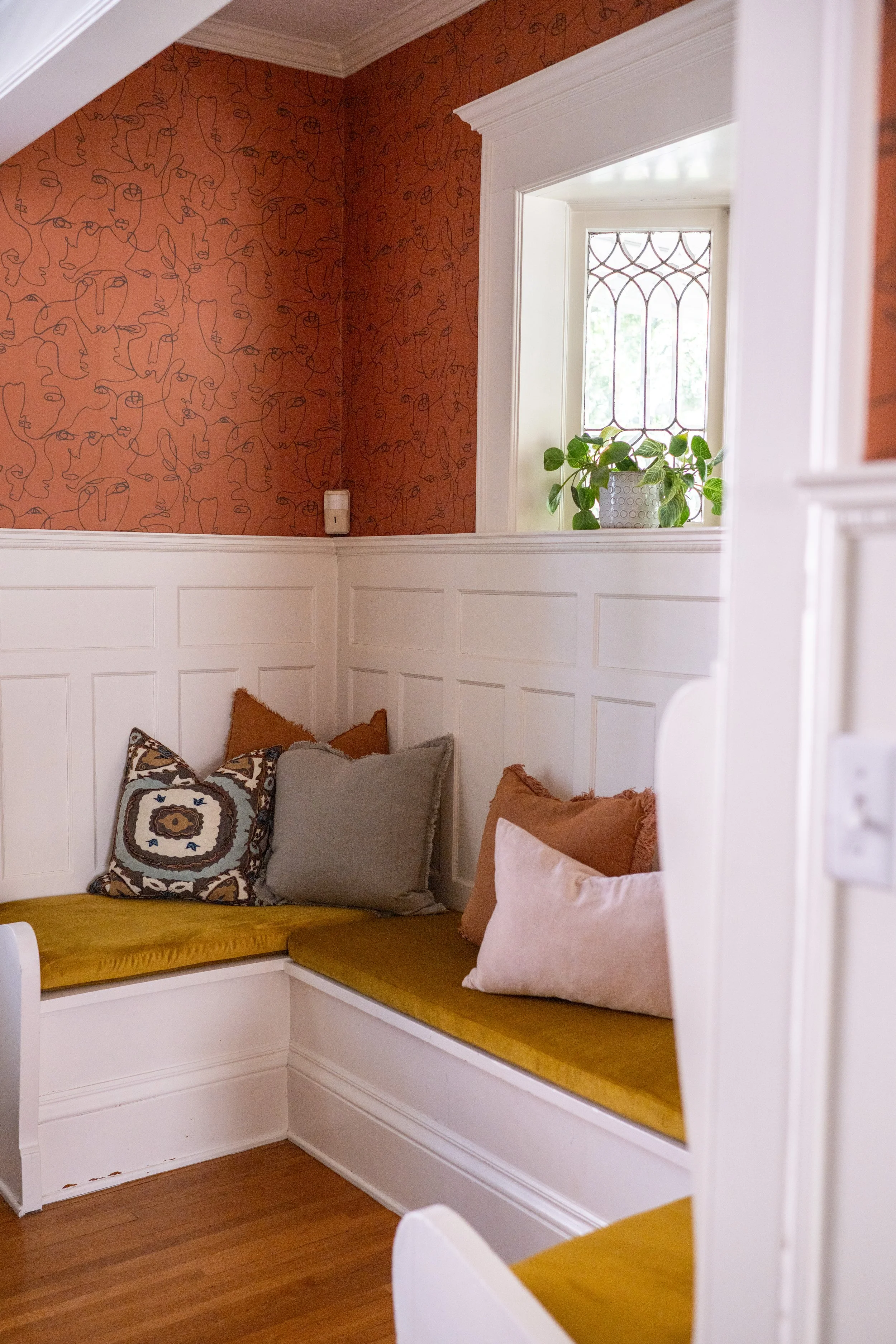A Guide To Mixing Patterns and Textures Without Going Overboard
The art of layering color, pattern, and texture like a pro.
People often shy away from mixing patterns and textures because they assume it’s tricky, like it’s some secret skill only seasoned designers have. In actuality, it’s less about strict rules and more about finding a rhythm. When done with intention, it makes a space feel layered, personal, and alive.
A lot of what we do when designing or styling a space is helping our clients figure out how to incorporate color, pattern, and texture without tipping the scales into “too much”. Our mentality is that playing with patterns isn’t about achieving perfection. It’s about confidence and knowing how to balance bold choices with subtle details.
Start With An Anchor, Then Build Around It
The easiest way to begin layering is by choosing one standout piece to set the tone. We call this your “anchor” pattern or texture. It could be a vintage Turkish rug, a wallpaper you can’t stop thinking about, a strong piece of art, or even a textured sofa in a statement color. That single element becomes your lead, your starting point for everything else in the room.
From there, you build around it. The goal isn’t to match everything perfectly but to find pieces that complement your anchor. Maybe it’s a patterned pillow that echoes a color in your rug, or a textured throw that softens a bold sofa. The first layer gives your space a clear point of view, and everything else plays off that tone.
Vary The Scale
One of the most common mistakes people make when mixing patterns is sticking with the same scale. Big prints on the rug, big prints on the pillows, big prints on the curtains… you get the picture. When every pattern is competing for attention, nothing wins.
Varying the scale of your patterns is what creates balance. Pair a large floral with a medium geometric, or a thick stripe with a delicate print. Mixing big, medium, and small-scale patterns helps your eye move comfortably around the space instead of feeling overwhelmed.
It’s equally important to let the space breathe. You don’t need to fill every inch of a room with color and pattern. Solids, neutrals, and natural textures act like a punctuation. They give a space rhythm and help your statement pieces stand out.
The Importance of Texture
We are focusing a lot on pattern, but texture does just as much heavy lifting in a well-layered space. It adds depth, contrast, and that subdued “something” that makes a room feel complete.
Think a chunky knit throw draped over a leather chair. A velvet pillow on a linen sofa. A woven basket next to a metal side table. Even in a neutral room, mixing soft, rough, matte, glossy, structured, and organic textures creates interest and makes everything feel more intentional.
Texture is also a great way to “quiet” a space when you have a lot of patterns in play. Where pattern brings energy, texture brings calm. It softens the look without making the space feel flat.
Color As The Common Thread
If pattern and texture are the conversation, color is what ties it all together. A shared color palette across your patterns and textures is the fastest way to make everything feel connected, even when the prints or styles are totally different.
This doesn’t mean everything has to match. It just means your colors should relate. Maybe you pick two or three key colors that show up in different ways, like in a patterned rug, a piece of art, or a painted accent. Otherwise, you can stick to a tighter color palette with lots of texture and layers for depth.
Even neutral palettes have a color story. Soft whites, natural woods, warm taupes, a pop of black for contrast. When the colors work, the rest falls into place.
It’s About Confidence, Not Rules
There’s no magic formula for laying patterns and textures. These tips can help get you started, but the best spaces usually come together through a little trial and error, and trusting your gut along the way.
Our advice is to start with one bold piece you love, layer around it, and edit as you go. If something feels off, take a step back, shift an element, and see how it changes the feel. The process of playing and adjusting is what makes a space feel personal, not over-styled.
If you need a second opinion, whether it’s picking a color palette, knowing where to add a pop of pattern, or figuring out how to mix textures, our designers can help. Contact us to set up a consult call.




